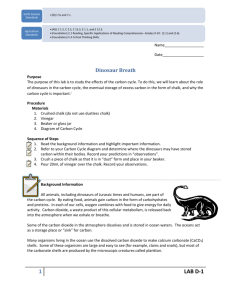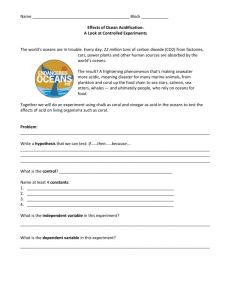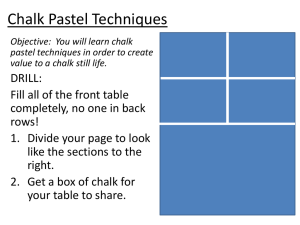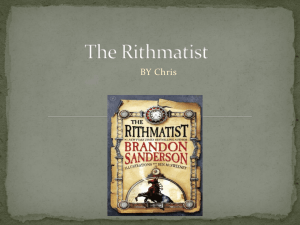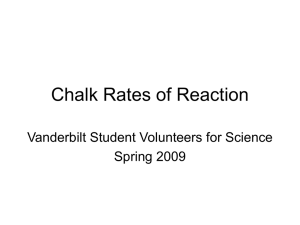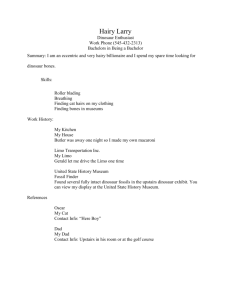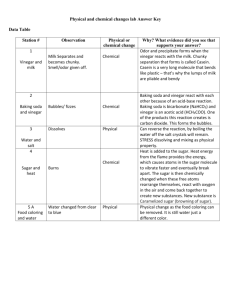Dinosaur Breath Worksheet Answer Key
advertisement
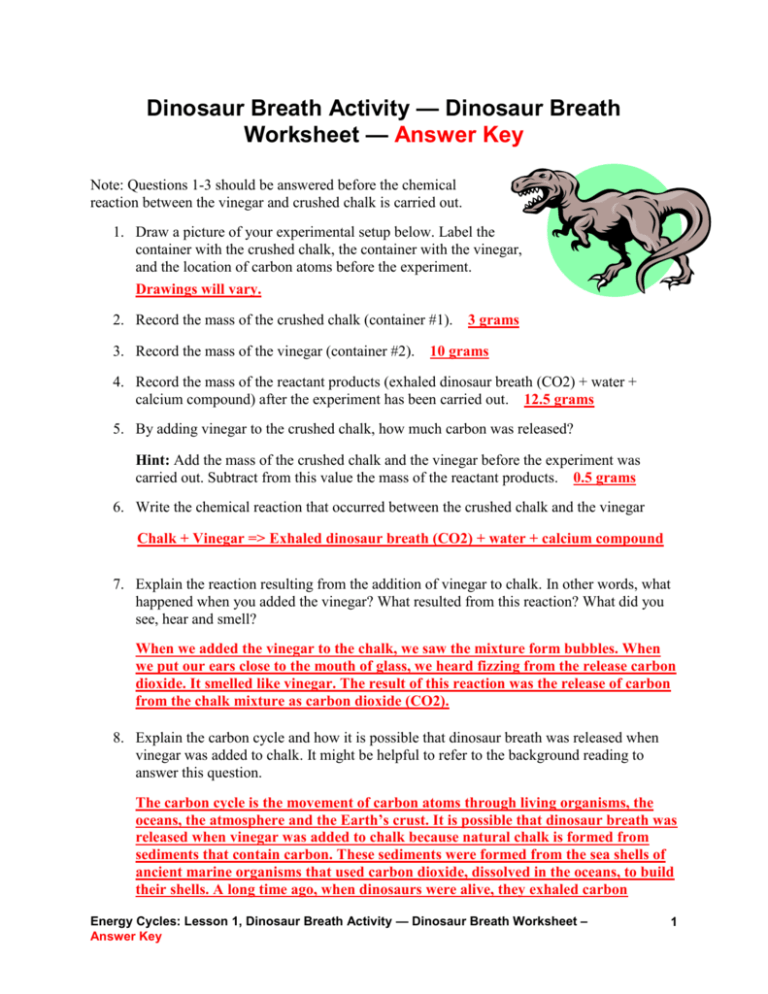
Dinosaur Breath Activity — Dinosaur Breath Worksheet — Answer Key Note: Questions 1-3 should be answered before the chemical reaction between the vinegar and crushed chalk is carried out. 1. Draw a picture of your experimental setup below. Label the container with the crushed chalk, the container with the vinegar, and the location of carbon atoms before the experiment. Drawings will vary. 2. Record the mass of the crushed chalk (container #1). 3. Record the mass of the vinegar (container #2). 3 grams 10 grams 4. Record the mass of the reactant products (exhaled dinosaur breath (CO2) + water + calcium compound) after the experiment has been carried out. 12.5 grams 5. By adding vinegar to the crushed chalk, how much carbon was released? Hint: Add the mass of the crushed chalk and the vinegar before the experiment was carried out. Subtract from this value the mass of the reactant products. 0.5 grams 6. Write the chemical reaction that occurred between the crushed chalk and the vinegar Chalk + Vinegar => Exhaled dinosaur breath (CO2) + water + calcium compound 7. Explain the reaction resulting from the addition of vinegar to chalk. In other words, what happened when you added the vinegar? What resulted from this reaction? What did you see, hear and smell? When we added the vinegar to the chalk, we saw the mixture form bubbles. When we put our ears close to the mouth of glass, we heard fizzing from the release carbon dioxide. It smelled like vinegar. The result of this reaction was the release of carbon from the chalk mixture as carbon dioxide (CO2). 8. Explain the carbon cycle and how it is possible that dinosaur breath was released when vinegar was added to chalk. It might be helpful to refer to the background reading to answer this question. The carbon cycle is the movement of carbon atoms through living organisms, the oceans, the atmosphere and the Earth’s crust. It is possible that dinosaur breath was released when vinegar was added to chalk because natural chalk is formed from sediments that contain carbon. These sediments were formed from the sea shells of ancient marine organisms that used carbon dioxide, dissolved in the oceans, to build their shells. A long time ago, when dinosaurs were alive, they exhaled carbon Energy Cycles: Lesson 1, Dinosaur Breath Activity — Dinosaur Breath Worksheet – Answer Key 1 dioxide, which could have been absorbed by the ocean water and then used by the marine organisms. 9. Explain why people are concerned with the rising level of carbon dioxide in the atmosphere (CO2). What are engineers doing to rebalance the carbon cycle? What can you do to help rebalance the carbon cycle? People are concerned with the rising level of carbon dioxide in the atmosphere because it could be leading to global warming, which is the observed increase of the Earth’s temperatures. Engineers are working to rebalance the carbon cycle by designing appliances, buildings and homes that use less energy. They are also designing things like solar panels and wind turbines that generate electricity without burning fossil fuels, which emit large amounts of CO2 into the atmosphere. I can help rebalance the carbon cycle by remembering to turn off the lights, my computer and my stereo. I can ride a bike or walk instead of drive and can talk to my family about recycling. Energy Cycles: Lesson 1, Dinosaur Breath Activity — Dinosaur Breath Worksheet – Answer Key 2
